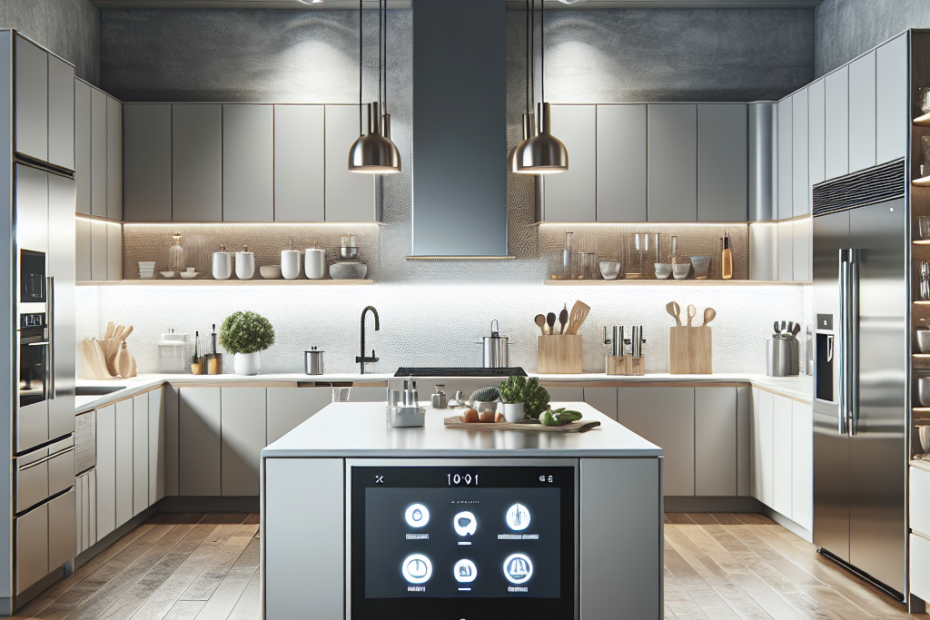In today’s rapidly advancing world, many people are interested in designing a contemporary kitchen with smart appliances. These modern solutions not only add a touch of innovation to their homes but also streamline their daily routines. By integrating cutting-edge technology with sleek design, they can create a space that is both functional and stylish.
Understanding Contemporary Kitchen Design
Contemporary kitchen design focuses on simplicity, clean lines, and a minimalist approach. The color palette tends to be neutral with bursts of color used sparingly to add interest. Materials like stainless steel, glass, and polished wood play significant roles in shaping contemporary spaces. They lean towards open-plan layouts that facilitate easy movement and interaction, making the kitchen a social hub in the home.
The Role of Smart Appliances
Smart appliances are revolutionizing how kitchens function. These devices, connected via the Internet of Things (IoT), offer various features that enhance convenience and efficiency. Examples include smart refrigerators that notify users when groceries are running low, ovens that can be preheated via smartphones, and voice-activated faucets.
| Appliance | Feature |
|---|---|
| Smart Refrigerator | Inventory management, recipe suggestions |
| Smart Oven | Remote control, preset cooking modes |
| Smart Faucet | Voice activation, water usage monitoring |
Steps to Designing a Contemporary Kitchen with Smart Appliances
1. Plan the Layout
They should start by planning a layout that maximizes space and workflow. Consider the “kitchen work triangle,” where the stove, sink, and refrigerator are positioned in a triangular arrangement. This layout minimizes movement, making cooking more efficient.
2. Choose the Right Appliances
When selecting smart appliances, it’s important to consider which features best suit their needs. According to Statista, the global smart appliance market is projected to grow to $39.9 billion by 2030, emphasizing the increasing availability and variety of options ([source](https://www.statista.com/statistics/896181/global-smart-appliance-market-size/)). Opt for appliances that offer connectivity, ease of use, and energy efficiency.
3. Focus on Aesthetics
Contemporary kitchens are known for their streamlined appearance. They can achieve this by choosing appliances with a cohesive look, often favoring stainless steel or matte finishes. It’s also helpful to incorporate built-in units that blend with cabinetry for a seamless appearance.
4. Incorporate Smart Lighting
Integrating smart lighting can enhance the functionality and mood of the kitchen. Smart bulbs allow them to adjust brightness and color temperature at different times of the day, creating an adaptable space for cooking and entertaining.
5. Add Smart Storage Solutions
For a clutter-free environment, they should invest in smart storage solutions. Smart cabinets and drawers that organize items efficiently can make the kitchen tidier and more accessible.
Advantages of Smart Appliances in Contemporary Kitchens
- Energy Efficiency: Many smart appliances are designed to conserve energy, reducing their carbon footprint and utility bills.
- Convenience: Remote control features and automation save time and effort in daily tasks.
- Improved Safety: Some appliances can notify them of maintenance issues or hazards, enhancing kitchen safety.
- Customization: The ability to program devices to fit specific needs results in a highly personalized kitchen experience.
Key Takeaways
Designing a contemporary kitchen with smart appliances means combining modern aesthetics with the latest technology. They should plan a practical layout, select smart appliances that fit their lifestyle, focus on cohesive design, incorporate smart lighting, and make use of intelligent storage solutions. This modern approach to kitchen design greatly enhances convenience and efficiency, making it a popular choice among homeowners.
FAQ
1. What are smart appliances?
Smart appliances are devices equipped with internet connectivity that allow for remote control and automation, often providing energy-efficient features and advanced functions.
2. Are smart appliances energy efficient?
Yes, many smart appliances are designed to be energy-efficient, helping to save on utility bills while minimizing environmental impact.
3. How do smart lights work in a kitchen?
Smart lighting can be controlled through apps or voice commands, allowing users to adjust brightness and mood settings easily to suit different activities and times of day.
4. Why is the “kitchen work triangle” important?
The “kitchen work triangle” minimizes movement between the stove, sink, and refrigerator, creating a more efficient cooking and preparation workflow.
5. Can I mix different brands of smart appliances?
Yes, they can mix different brands, but it may be helpful to check for compatibility or use a smart home system that can integrate diverse devices for seamless operation.
